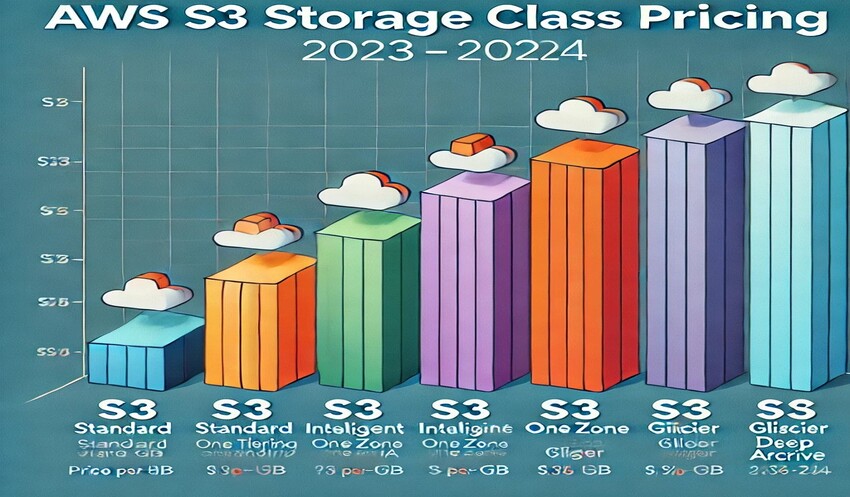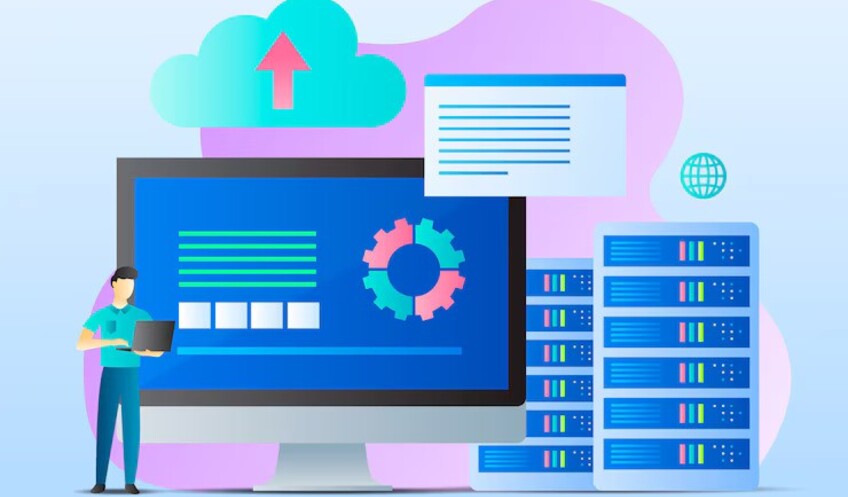Cloud storage is vital for small businesses aiming to manage their data efficiently. AWS S3 (Amazon Simple Storage Service) is one of the most popular storage solutions due to its scalability and affordability. Understanding AWS S3 pricing is crucial for determining whether it fits your business needs. This guide breaks down the costs, features, and benefits, helping small businesses decide if AWS S3 is a cost-effective option.
What is AWS S3
AWS S3 is a cloud storage solution designed for scalability, reliability, and high-speed data access. It supports various use cases, including website hosting, backup storage, and big data analytics.
AWS S3 Pricing Structure
AWS S3 pricing is based on several factors:
-
Storage Costs: Charges depend on the storage tier selected and the amount of data stored.
-
Data Transfer Costs: Includes charges for transferring data out of AWS.
-
Requests and Retrieval Costs: Charges apply for accessing or retrieving stored data.
Small businesses benefit from AWS’s pay-as-you-go pricing model, which avoids upfront costs.
Storage Classes and Costs
AWS S3 offers various storage classes, each suited to different business needs.
a. S3 Standard
-
Ideal for frequently accessed data.
-
Cost: $0.023/GB for the first 50TB per month.
b. S3 Intelligent-Tiering
-
Automatically moves data to lower-cost storage tiers.
-
Cost: Starts at $0.023/GB, with additional monitoring fees.
c. S3 Standard-Infrequent Access (IA)
-
Best for data accessed less frequently.
-
Cost: $0.0125/GB per month.
d. S3 Glacier
-
Designed for long-term archival storage.
-
Cost: Starts at $0.004/GB per month.
Data Transfer Costs
Transferring data into AWS S3 is free, but data transferred out incurs charges.
-
Out-of-Region Transfer: $0.09/GB for the first 10TB.
-
AWS to AWS Transfers: Reduced rates apply for intra-AWS transfers.
Small businesses should optimize data transfers to minimize costs.
Requests and Retrieval Pricing
AWS charges per request for data storage operations:
-
PUT, COPY, POST, or LIST Requests: $0.005 per 1,000 requests.
-
GET and SELECT Requests: $0.0004 per 1,000 requests.
For frequently accessed data, costs can add up, but they remain low for small businesses.
Benefits of AWS S3 for Small Businesses
a. Scalability
AWS S3 grows with your business, supporting storage needs from a few gigabytes to petabytes.
b. Cost-Effective Tiers
The variety of storage classes allows businesses to optimize costs based on access frequency.
c. High Availability
AWS S3 offers 99.99% availability, ensuring reliable access to your data.
d. Security
Built-in security features like encryption and access control protect sensitive business data.
e. Pay-As-You-Go
No upfront fees mean small businesses only pay for what they use.
Cost Optimization Tips
a. Choose the Right Storage Class
Store frequently accessed files in S3 Standard and archives in S3 Glacier.
b. Enable Intelligent-Tiering
Automatically move data between tiers based on usage patterns to save costs.
c. Monitor Usage
Use AWS Cost Explorer to track and optimize your spending.
d. Minimize Data Transfer Costs
Host data close to users or within the same AWS region to reduce transfer fees.
Comparing AWS S3 to Competitors
AWS S3 competes with Google Cloud Storage and Microsoft Azure Blob Storage.
-
AWS S3 offers the most extensive storage class options and global availability.
-
Google Cloud Storage has simpler pricing but fewer advanced tiering features.
-
Azure Blob Storage integrates well with Microsoft services but is less flexible for non-Microsoft environments.
AWS S3 is often the preferred choice for small businesses due to its flexibility and cost-effectiveness.
Use Cases for Small Businesses
AWS S3 supports various small business applications:
-
Backup and Disaster Recovery: Store secure backups at a lower cost using Glacier.
-
Website Hosting: S3 Standard is ideal for hosting static websites.
-
Big Data Analytics: Use S3 Intelligent-Tiering for storing analytics data cost-effectively.
Drawbacks of AWS S3 for Small Businesses
While AWS S3 pricing is flexible, small businesses should watch for unexpected costs.
-
Frequent data retrieval can increase costs.
-
Monitoring fees for Intelligent-Tiering add small additional expenses.
-
Mismanagement of storage classes may lead to unnecessary spending.
Current and Previous Year Statistics on AWS S3 Pricing
AWS S3 pricing trends have consistently highlighted affordability and scalability, making it a popular choice for businesses of all sizes. Here’s a summary of the latest statistics:
- Price Reductions in 2023 and 2024
AWS has a history of reducing costs to remain competitive. For example, in 2023, AWS introduced a 31% reduction in the pricing for S3 Standard-Infrequent Access and S3 One Zone-Infrequent Access across nine regions, enhancing its appeal for cost-sensitive users. - Storage Costs by Class (2023-2024)
- S3 Standard: $0.023 per GB for the first 50TB per month.
- S3 Glacier Deep Archive: $0.00099 per GB per month, ideal for long-term data storage.
- Intelligent-Tiering pricing dynamically adjusts based on usage patterns, providing flexibility at no added retrieval cost.
- Usage Growth Trends
- Amazon S3 powers a large portion of AWS’s revenue, with cloud storage demands increasing significantly. AWS revenue overall saw a 19% growth in Q2 2024 compared to Q2 2023.
- Data Transfer and Request Pricing
- Inbound transfers remain free, while outbound transfers start at $0.09 per GB for the first 10TB per month. Request costs range from $0.0004 for GET/SELECT to $0.005 for PUT/COPY per 1,000 requests.
- Cost Optimization Features
- Tools like Intelligent-Tiering and lifecycle policies have gained adoption as businesses aim to minimize costs. Lifecycle policies automatically transition data to lower-cost tiers like Glacier.
These statistics illustrate AWS’s focus on balancing cost-efficiency with advanced features, solidifying its position as a leader in cloud storage. For small and medium businesses, the steady reductions and flexible tiers make AWS S3 a cost-effective solution in 2024.

AWS S3 Pricing Comparison (2023 vs. 2024)
| Storage Class | Price per GB (2023) | Price per GB (2024) | Change (%) |
|---|---|---|---|
| S3 Standard | $0.023 | $0.023 | No Change |
| S3 Intelligent-Tiering | $0.023 | $0.023 | No Change |
| S3 Standard-IA | $0.0125 | $0.0125 | No Change |
| S3 One Zone-IA | $0.01 | $0.01 | No Change |
| S3 Glacier | $0.004 | $0.004 | No Change |
| S3 Glacier Deep Archive | $0.00099 | $0.00099 | No Change |
Key Observations
- AWS maintained consistent pricing between 2023 and 2024 across all storage classes.
- AWS’s commitment to stable pricing supports small and large businesses in budgeting long-term cloud storage solutions.
This table highlights AWS’s focus on cost predictability, ensuring its pricing remains competitive and reliable year over year.
Conclusion
AWS S3 is a cost-effective storage solution for small businesses, offering scalability, reliability, and flexibility. By understanding AWS S3 pricing and optimizing usage, businesses can significantly reduce costs while enjoying robust cloud storage. With proper planning, AWS S3 can help small businesses manage their data efficiently and grow sustainably.
Read Dive is a leading technology blog focusing on different domains like Blockchain, AI, Chatbot, Fintech, Health Tech, Software Development and Testing. For guest blogging, please feel free to contact at readdive@gmail.com.





